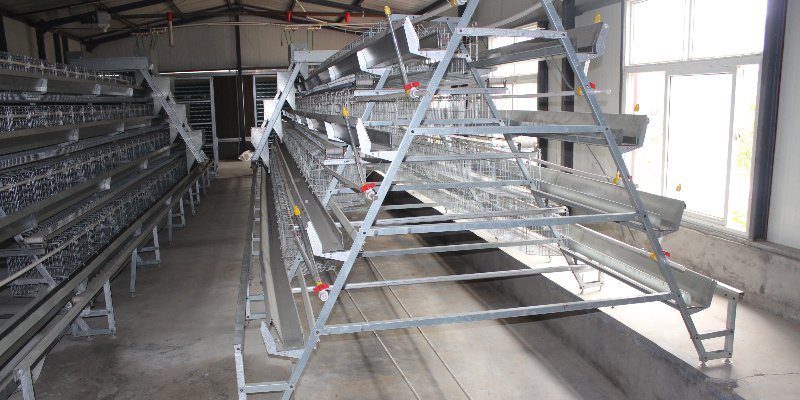
How to Invest in Layer Farm in Kenya
Investing in a layer farm in Kenya can be a game-changer for anyone looking to dive into the poultry business. With the rising population and an increasing demand for eggs, starting a layer farm can be both a profitable venture and a way to contribute to food security in the country. But before you rush into it, let’s break down what you need to know about layer farm investment in Kenya.
Understanding the Basics of Layer Farming
First things first, what exactly is layer farming? In simple terms, it’s all about raising hens specifically for egg production. These birds are different from broilers, which are bred for meat. If you’re considering layer farm investment in Kenya, you’ll want to focus on breeds that are known for their high egg yield—like the Hy-Line or Lohmann.
Before you jump in, take some time to research. Talk to other farmers, check out local markets, and find out what breeds work best in your area. This foundational knowledge will save you time and money down the road.
How to choose layer farm location in Kenya
When it comes to any type of investment, location matters—a lot! For your layer farm investment in Kenya, pick a spot that’s easily accessible yet away from residential areas to minimize noise complaints. Proximity to suppliers and markets is key; this will make it easier to get feed and sell your eggs.
Look for land that has good drainage and is not prone to flooding. And while you’re at it, think about how much space you’ll actually need. A starting farm might require about 100 to 500 layers, so factor that into your land size calculations.
Budgeting Your Layer Farm Investment
Money talks, right? Before diving headfirst into your layer farm investment in Kenya, create a solid budget. Consider costs like:
- Land Purchase/Rent: Factor this into your initial investment.
- Cages: A-type and H-type laying hen cages are popular choices. They maximize space and improve egg collection efficiency. At Livi Machinery, we specialize in these types of cages, so don’t hesitate to reach out for more information!
- Feed: Quality feed is essential for healthy hens and optimal egg production. Make sure to calculate monthly feed costs.
- Health Management: Vaccinations and veterinary care are crucial to keep your flock healthy, so set aside funds for these expenses.
Getting the numbers right will help you avoid financial pitfalls later on.
Choosing the Right Equipment
Investing in the right equipment is vital for your layer farm’s success. Aside from the cages, consider other necessary tools like drinkers, feeders, and egg collection systems.
Livi Machinery offers various poultry farming machinery that can streamline your operations and boost productivity. Investing in quality equipment might seem costly upfront, but it can significantly reduce labor costs and increase your efficiency over time.
Hiring the Right Help
Once you’ve got your farm set up, you’ll need reliable staff. While some may choose to manage everything themselves initially, hiring experienced workers can save you headaches. Look for individuals who have experience in poultry farming and understand the ins and outs of layer management.
Having a dedicated team can also help ensure that your layer farm investment in Kenya operates smoothly. Plus, they can assist with tasks like cleaning, feeding, and monitoring hen health.
Egg Production Management
Egg production can be affected by various factors, including feed quality, lighting, and overall hen health. Understanding these elements can dramatically influence your revenue.
Feed: It’s crucial to provide a balanced diet that meets all nutritional needs. You might even want to consult with a poultry nutritionist to develop a specialized feeding program for your birds.
Lighting: Hens need around 14 to 16 hours of light daily to maintain optimal egg production. If natural light isn’t sufficient, consider installing artificial lighting in your chicken house.
Health Monitoring: Regularly check on your flock for signs of illness or distress. Keeping your hens healthy will directly impact your egg production and, in turn, your profits.
Marketing Your Eggs
So, you’ve raised your hens and now you’re ready to sell those eggs. How do you go about it? With your layer farm investment in Kenya, having a solid marketing strategy is just as important as raising the birds themselves.
Start by identifying your target market. Will you sell directly to consumers at local markets, or do you want to supply restaurants and grocery stores? Building relationships with local businesses can lead to steady sales and perhaps even bulk orders.
Consider branding your eggs, too. Unique packaging or labeling—especially if you’re going organic—can make your product stand out on store shelves.
Financial Considerations
Like any business, you’ll want to track your finances carefully. Keep an eye on your daily expenses and sales revenue. Using accounting software or hiring an accountant could be wise.
Also, think about insurance. Protecting your investment from losses due to disease outbreaks or natural disasters can save you a lot of stress. Research agricultural insurance options tailored for poultry farmers in Kenya, and make sure to invest in a policy that suits your needs.
One of the key financial aspects to consider when looking at layer farm investment in Kenya is cash flow. Egg production can be seasonal, so it’s important to plan for periods when egg production may dip. Have a financial cushion or backup plan for those times to ensure your farm stays afloat.
Final Thoughts
Layer farm investment in Kenya can be a rewarding venture if done right. With the right knowledge, planning, and dedication, it’s possible to build a sustainable and profitable business. Be sure to invest in quality equipment, such as A-type and H-type laying hen cages, which can help maximize production and efficiency. Pay attention to market trends, health management, and financial planning, and you’ll be on your way to success.


